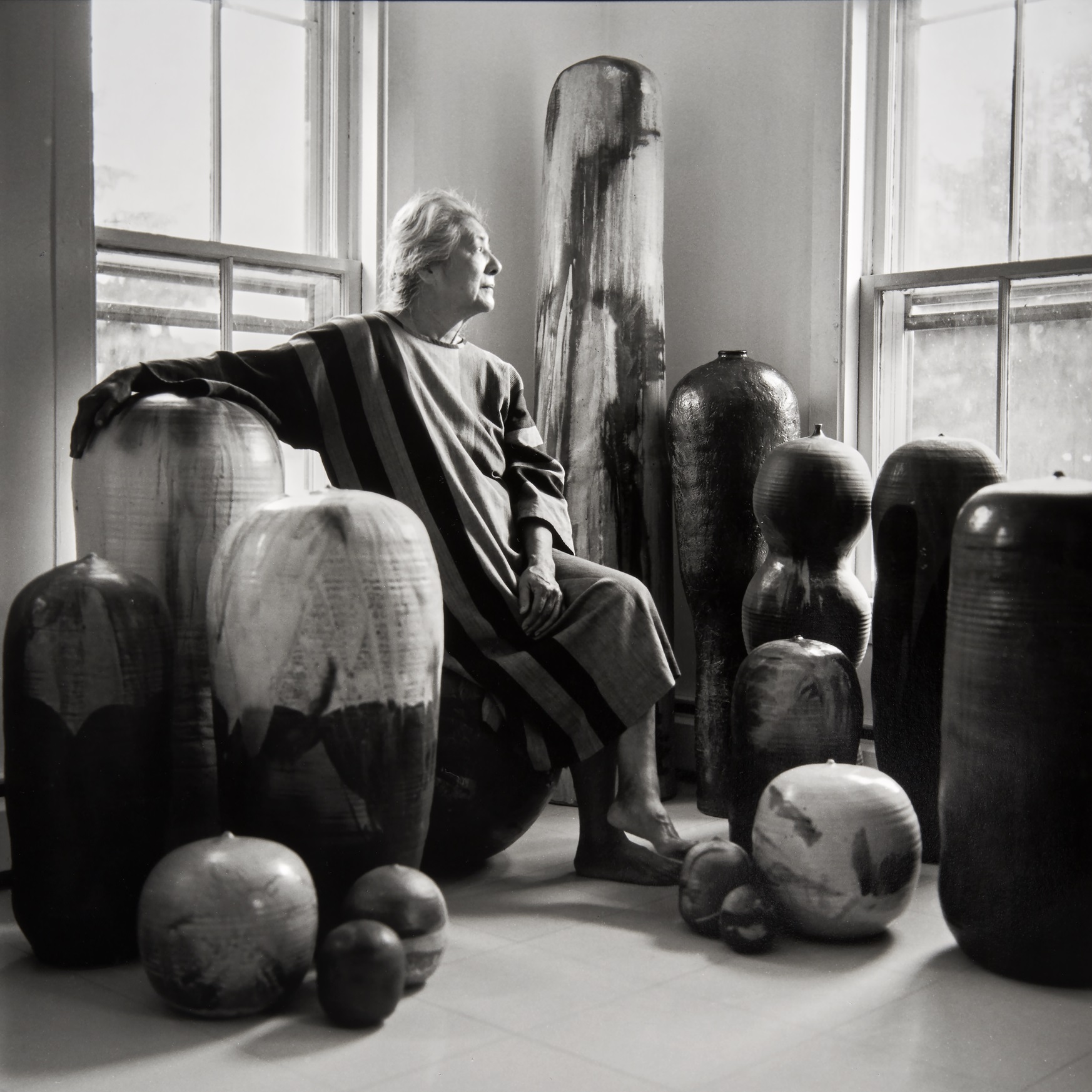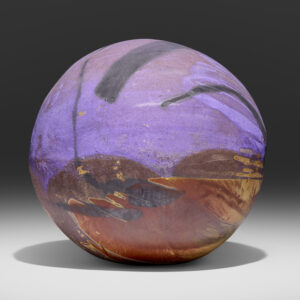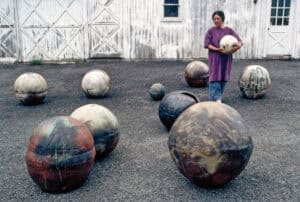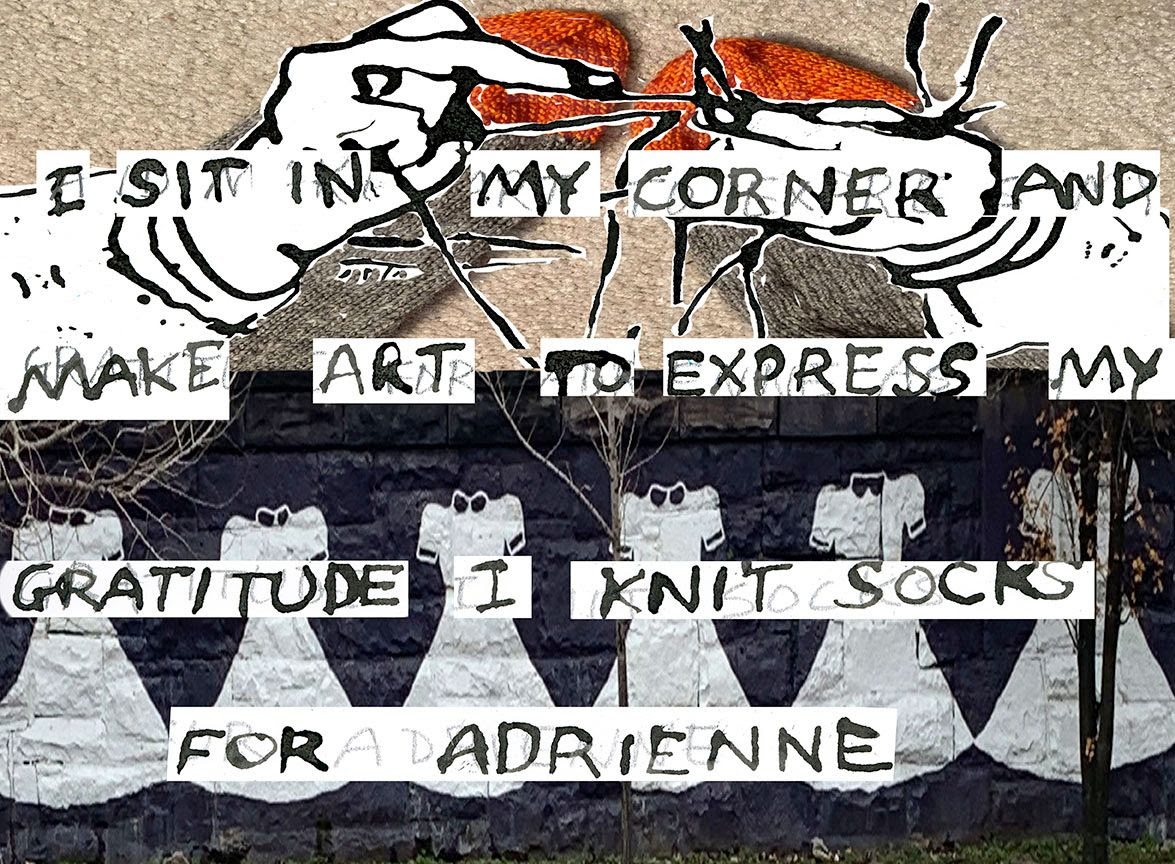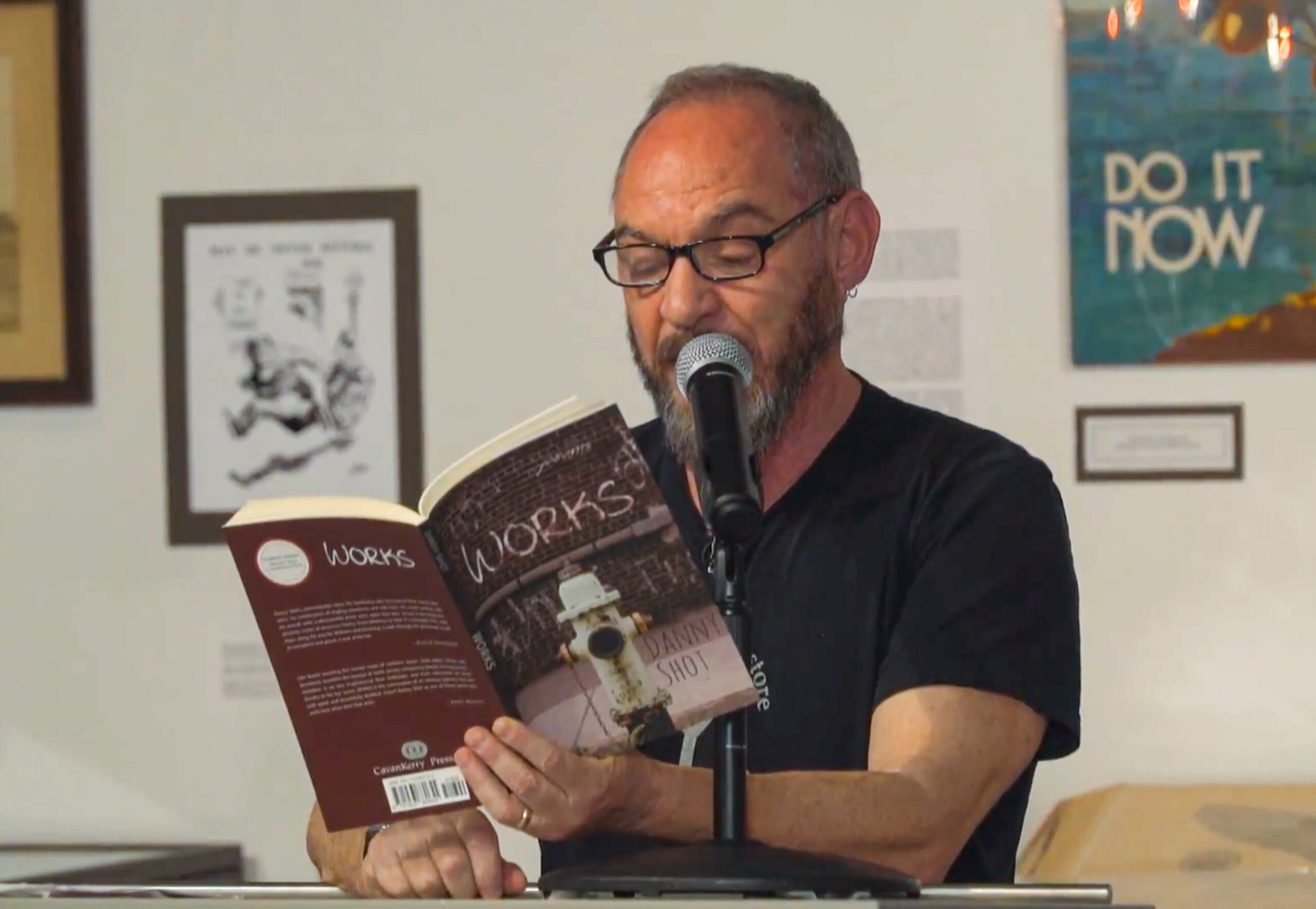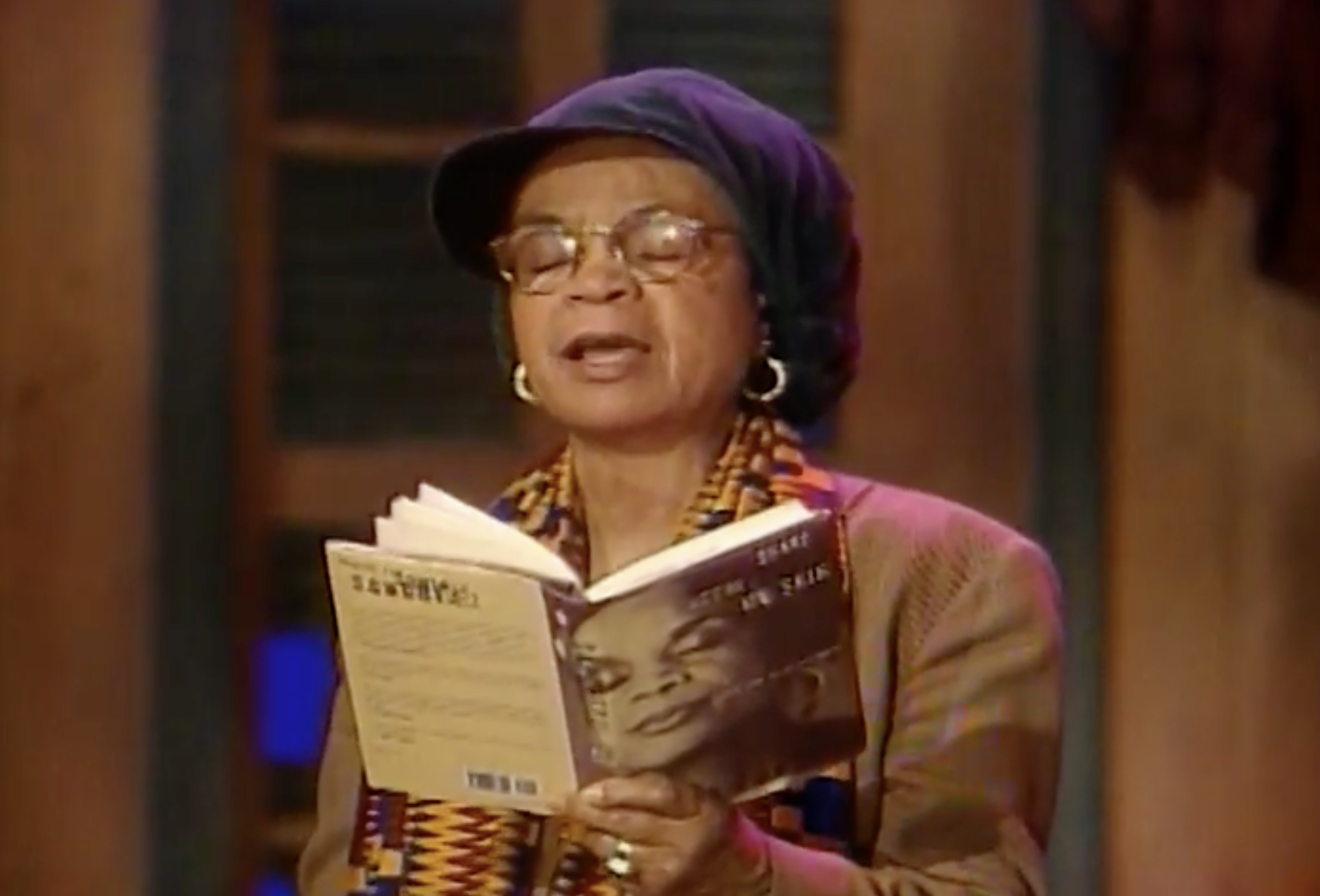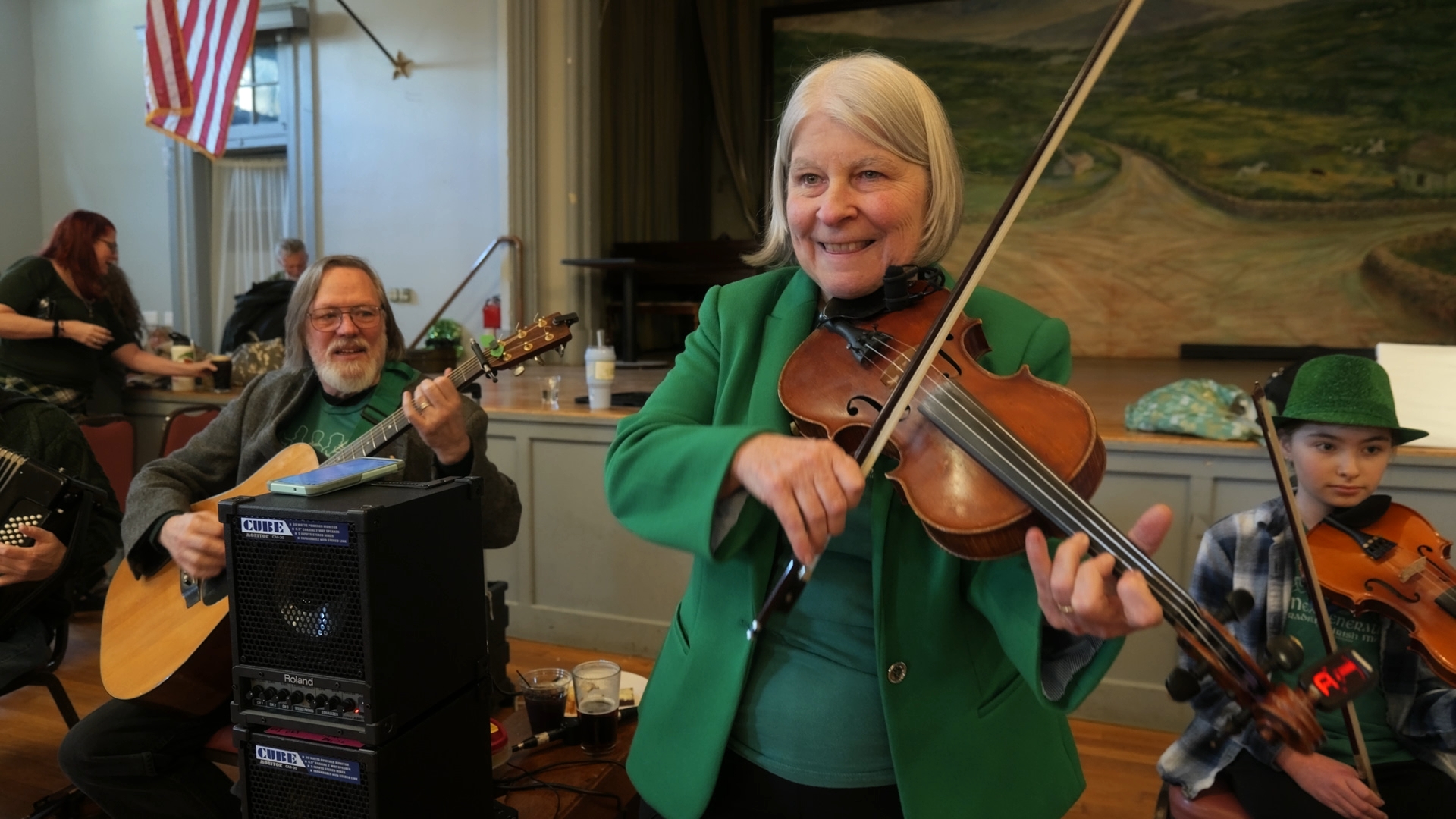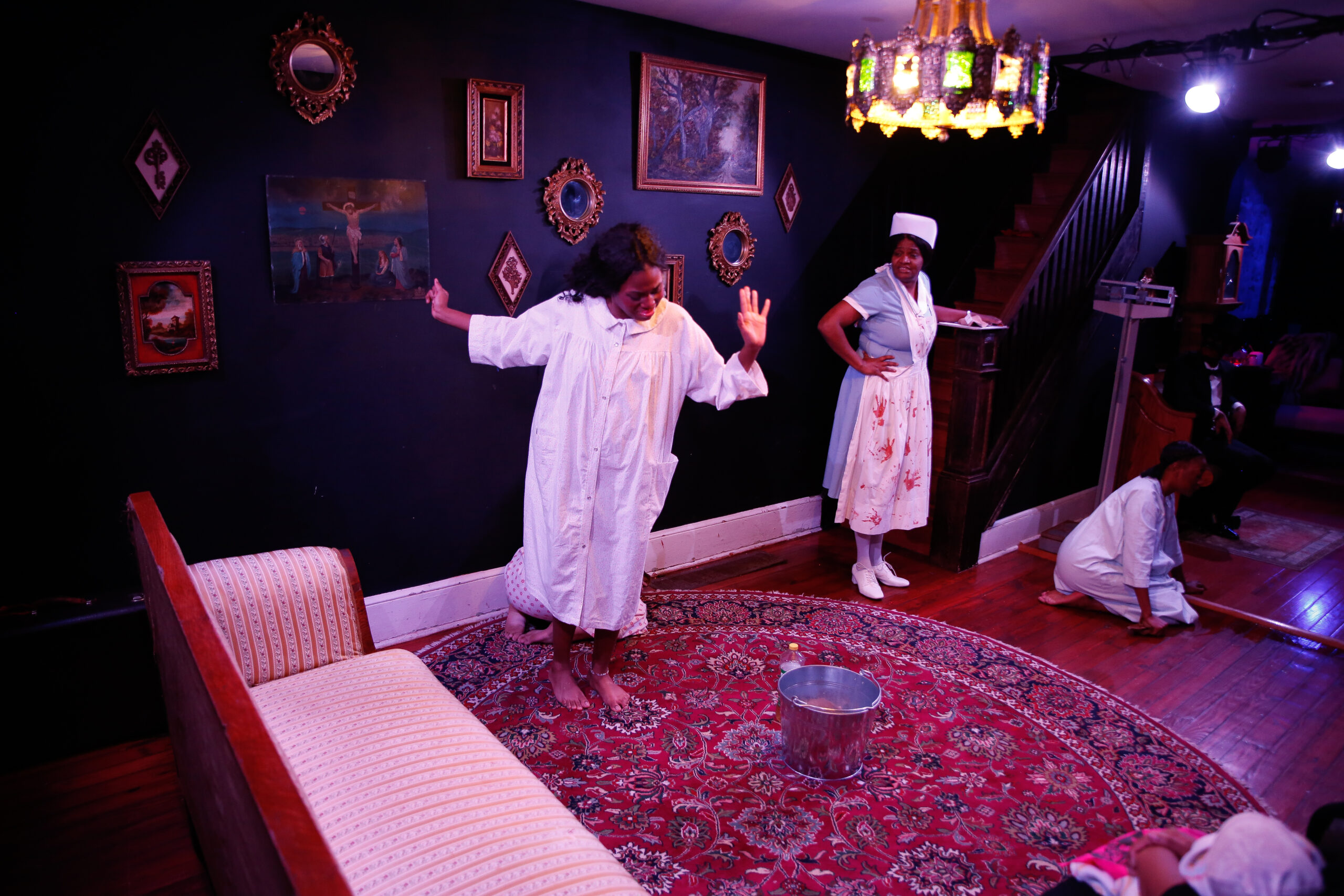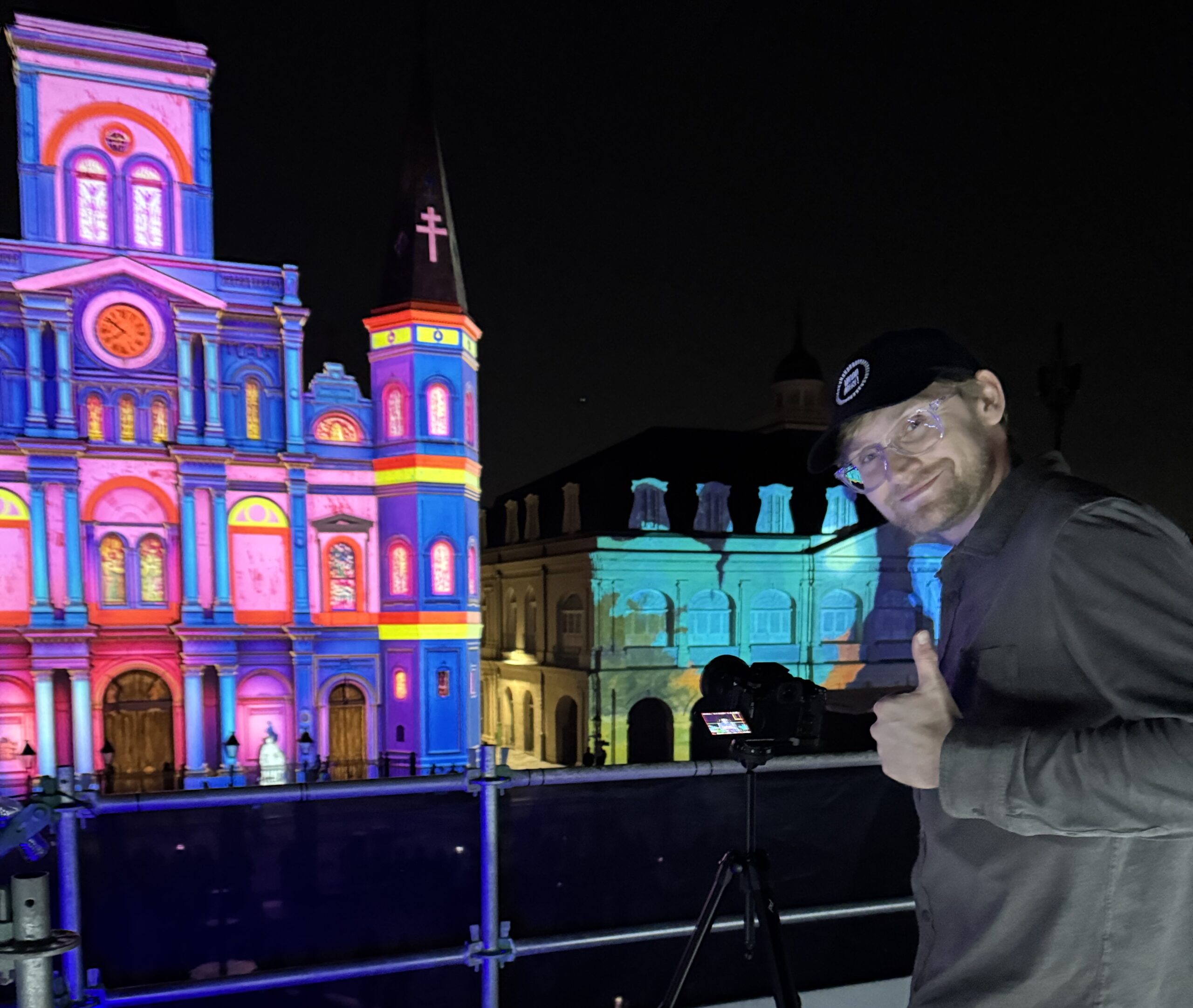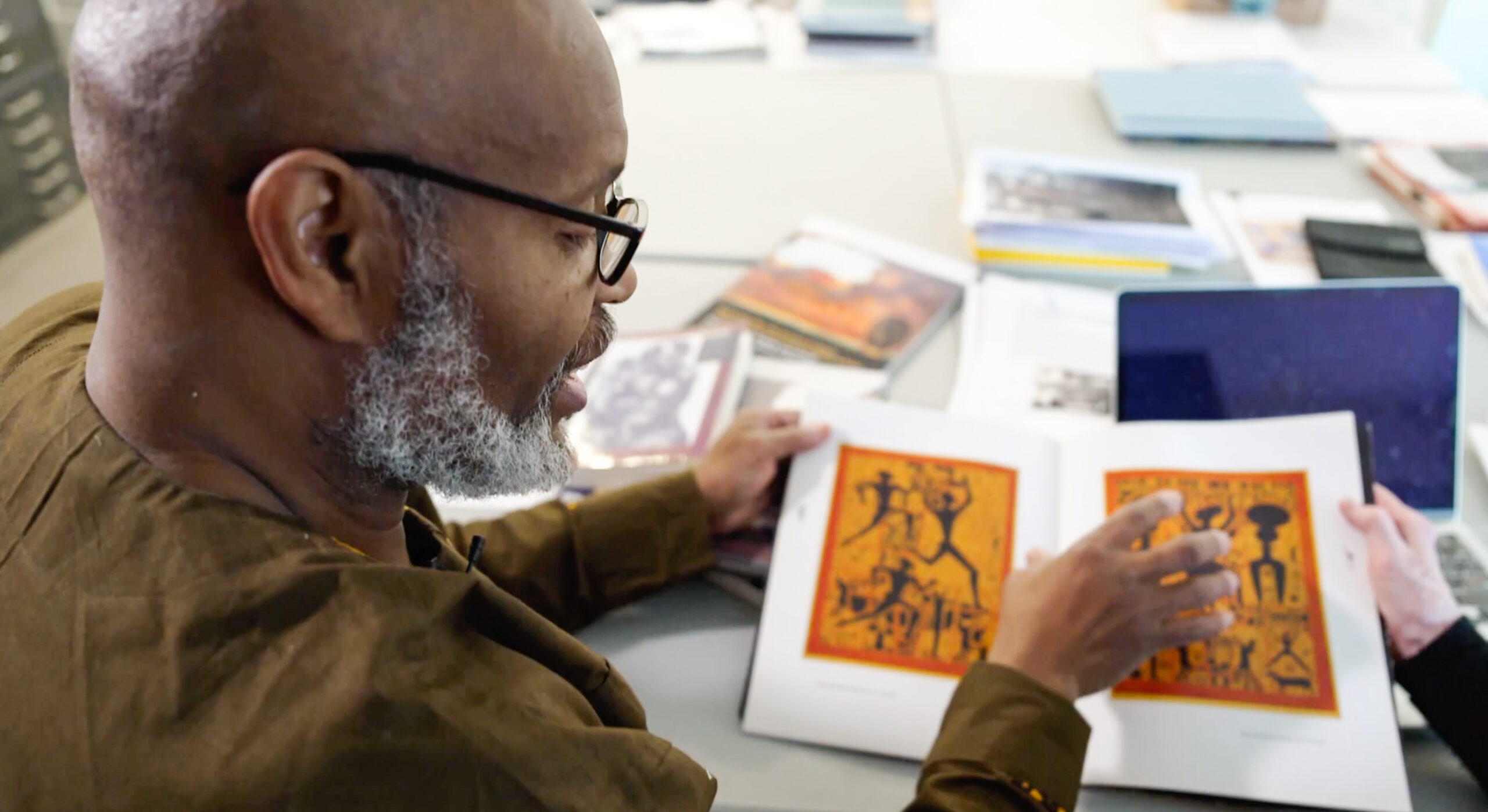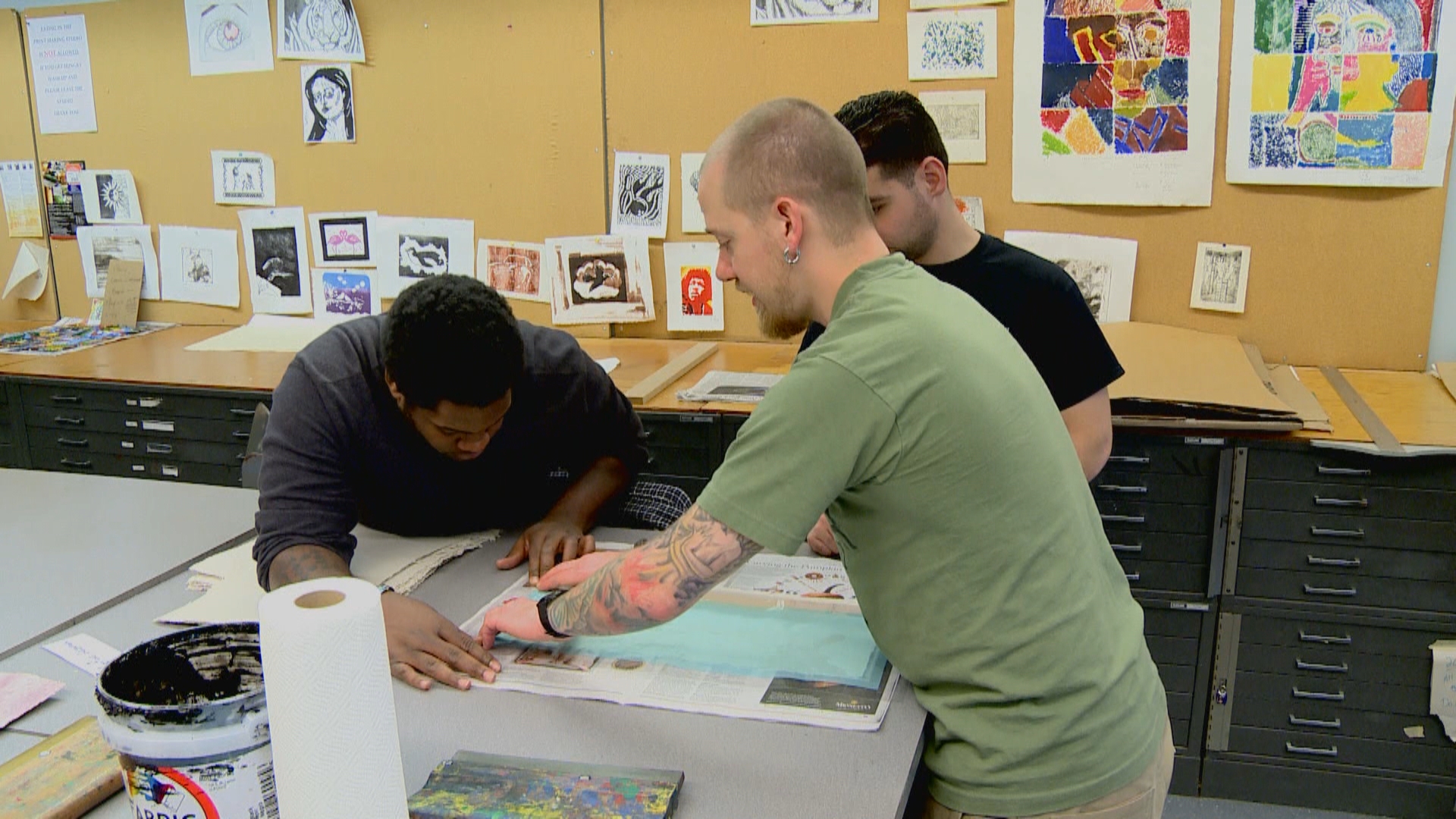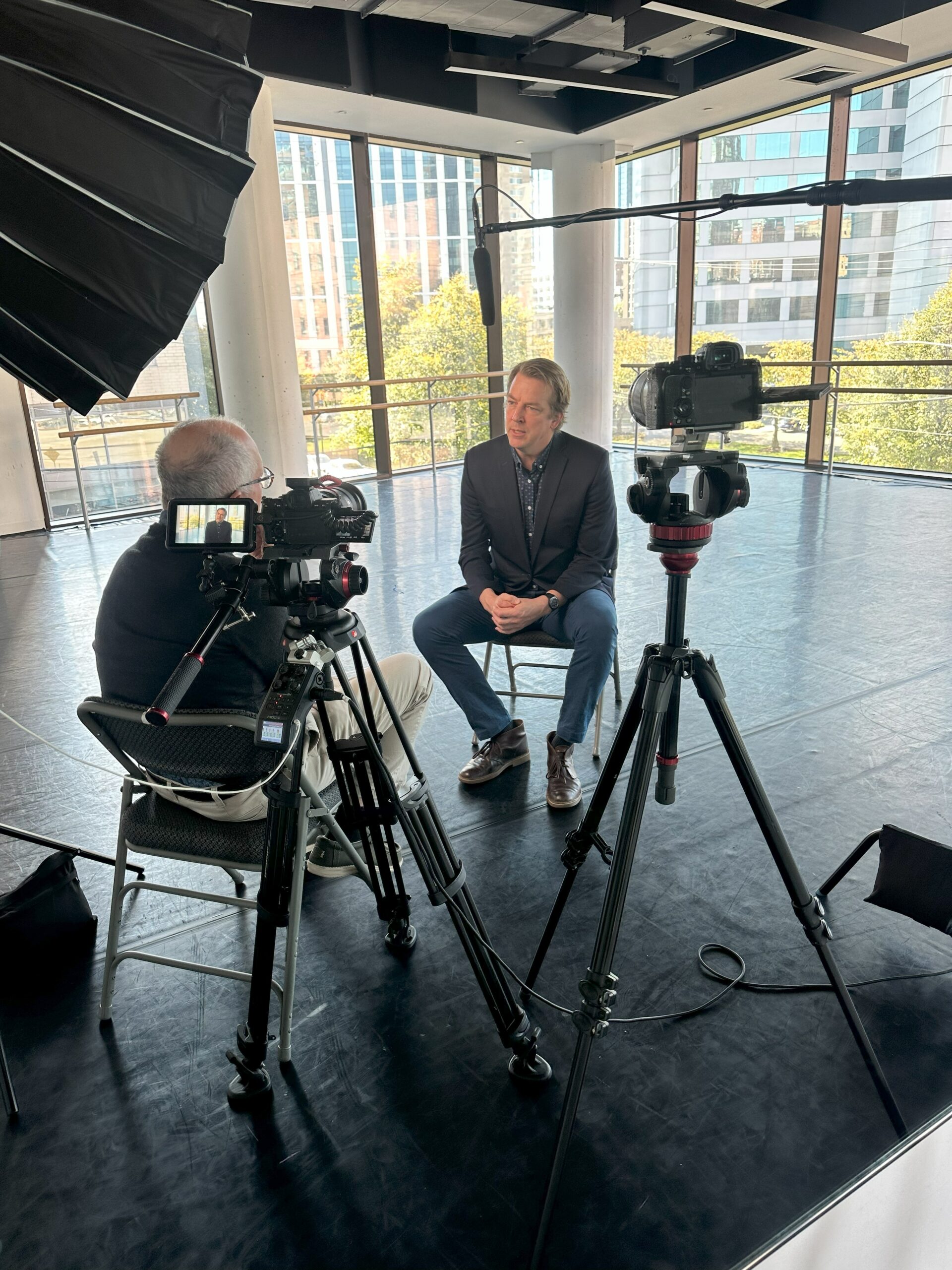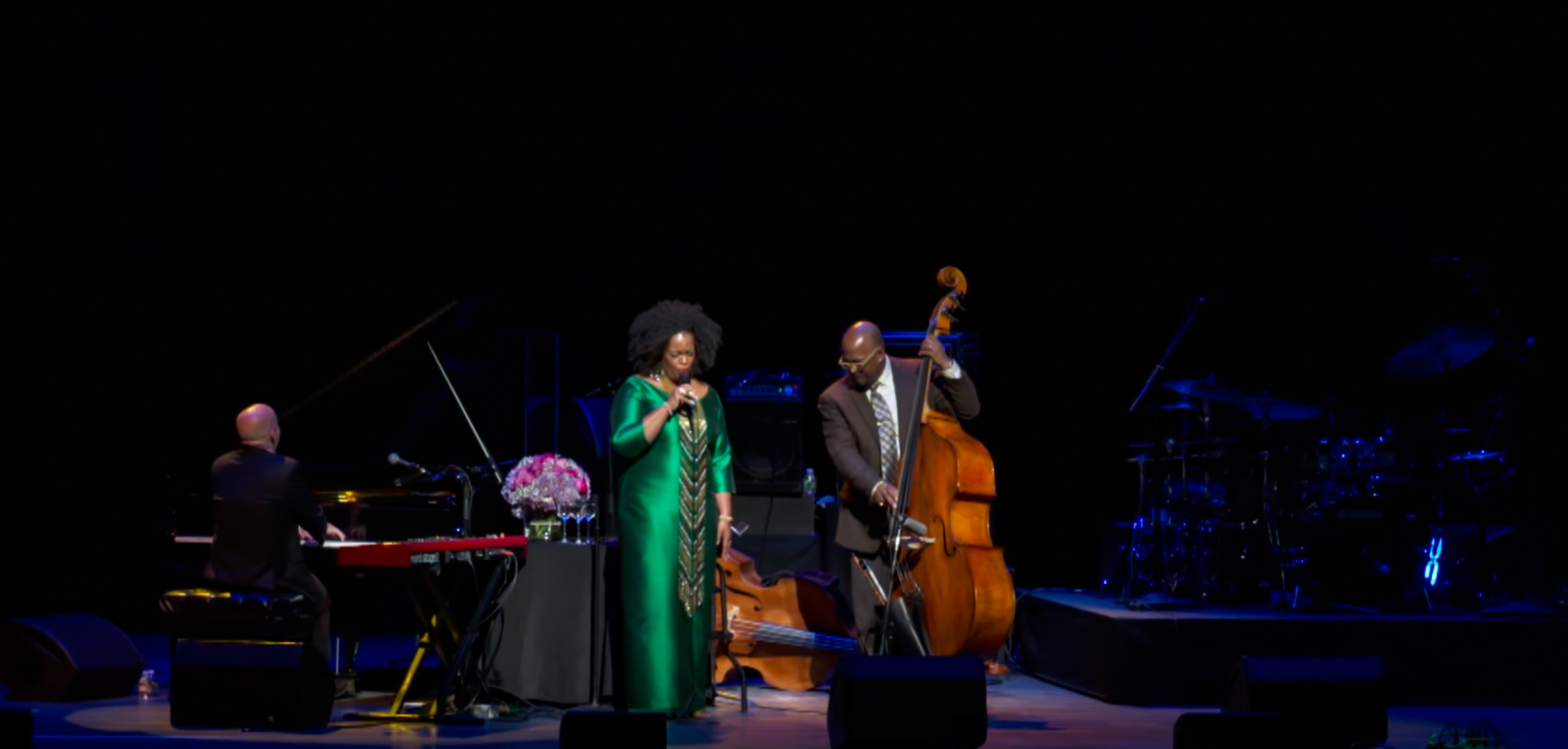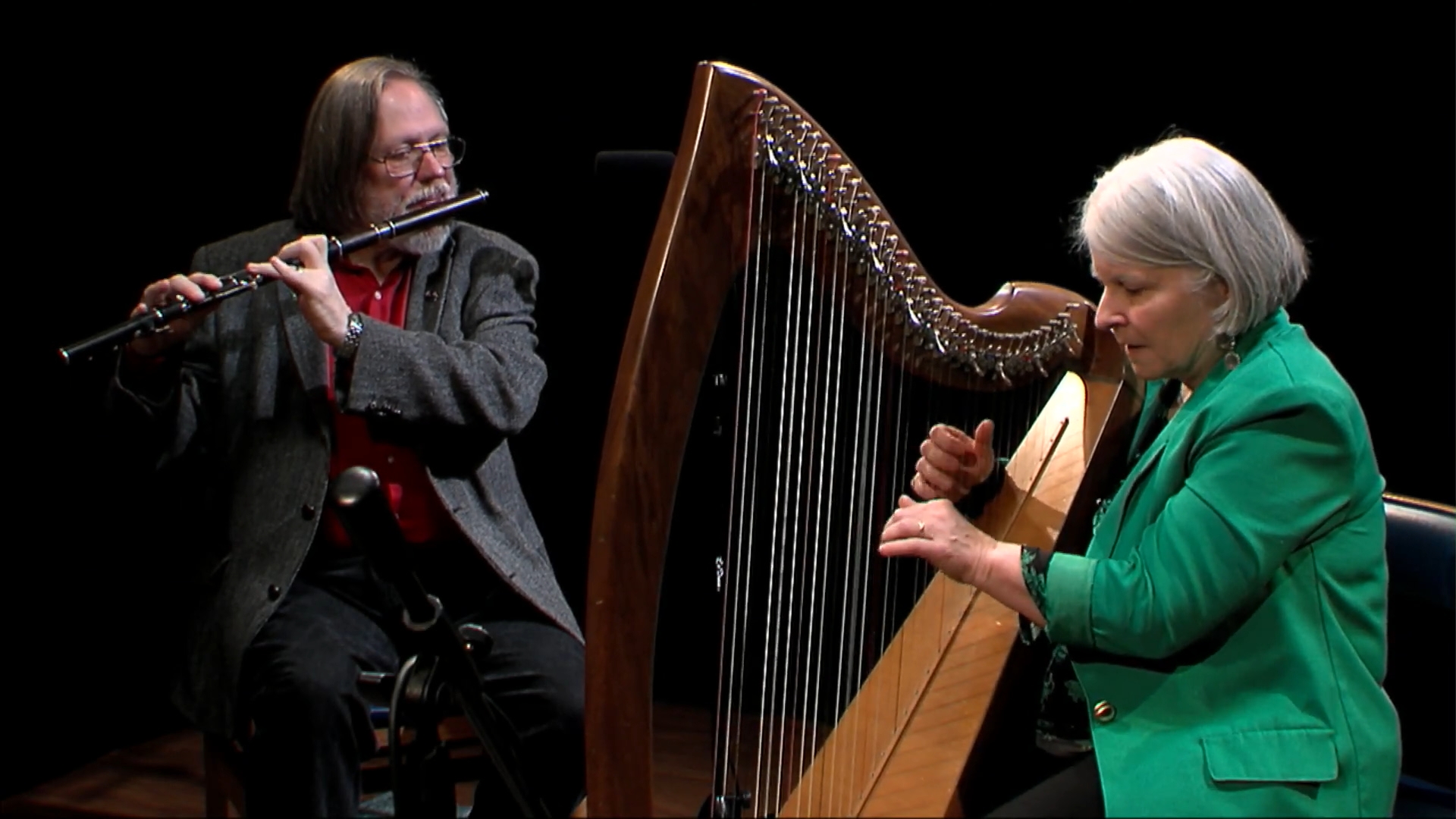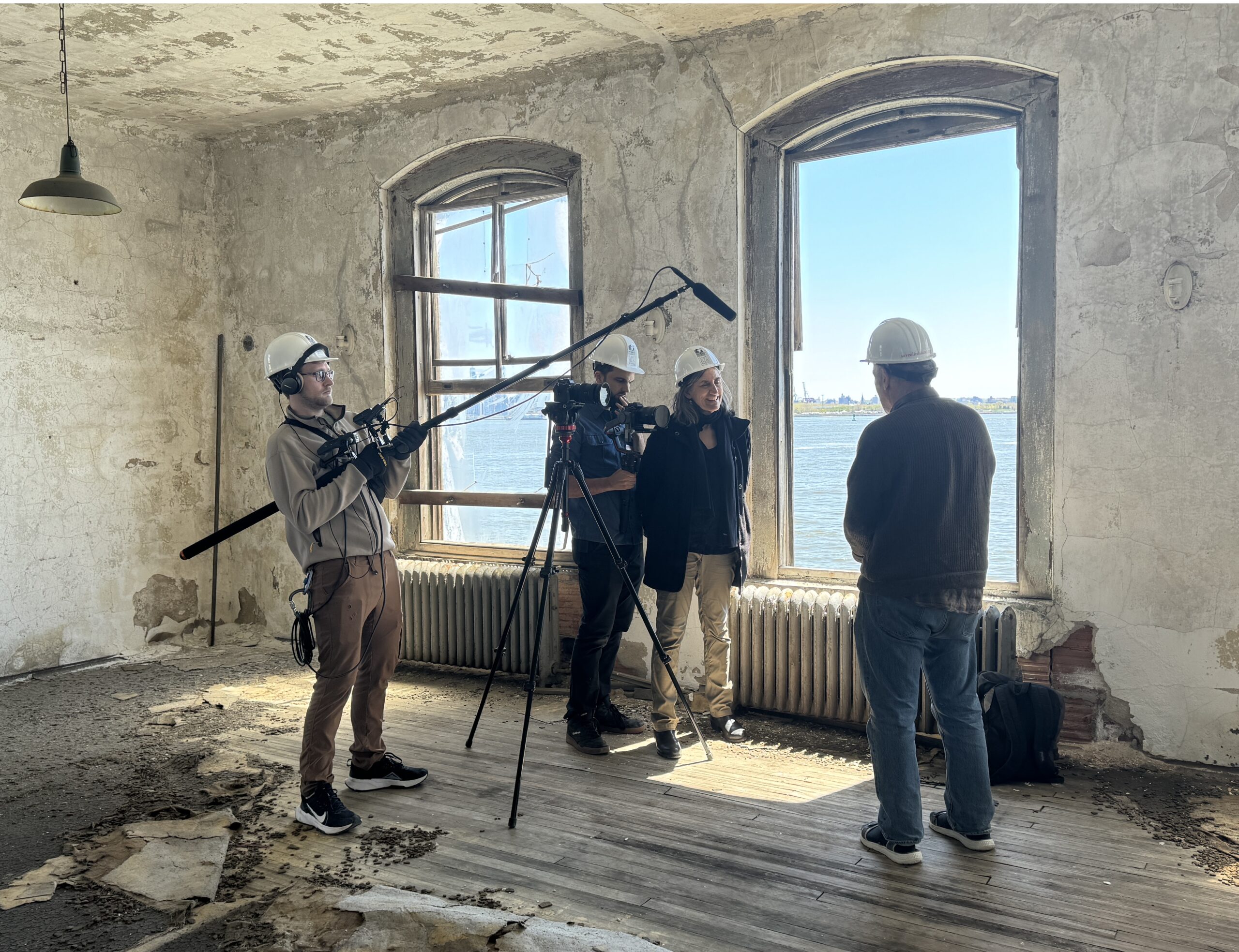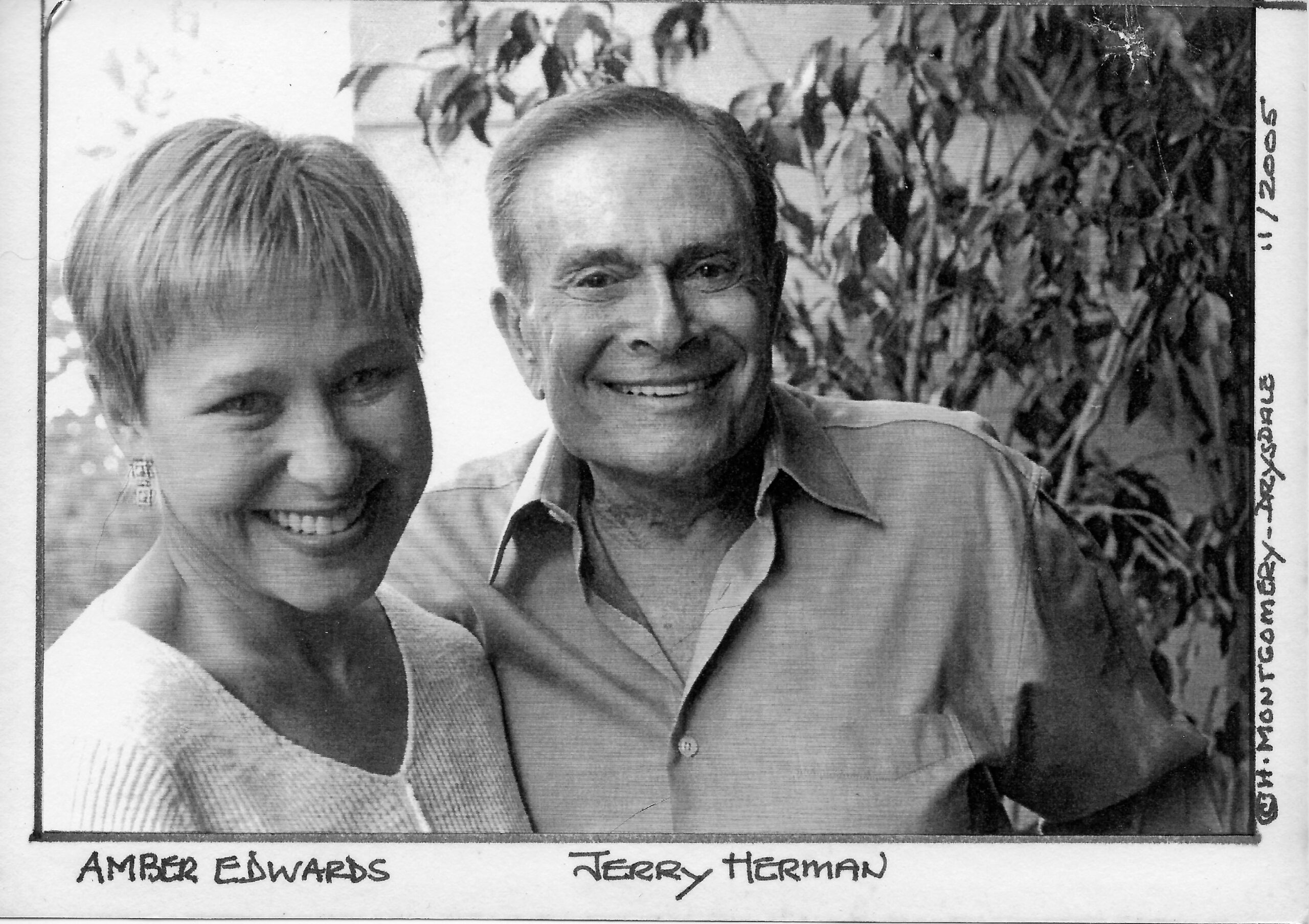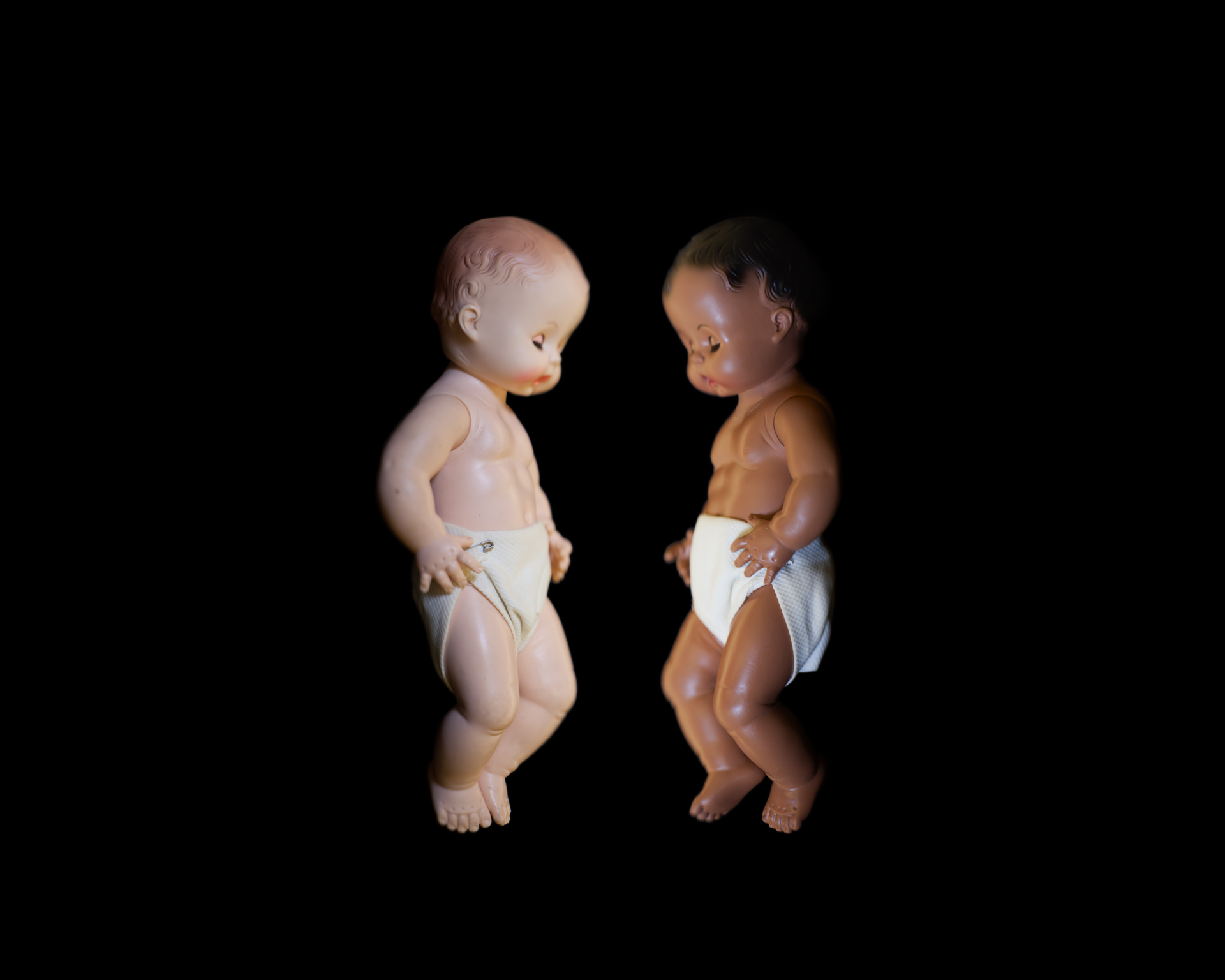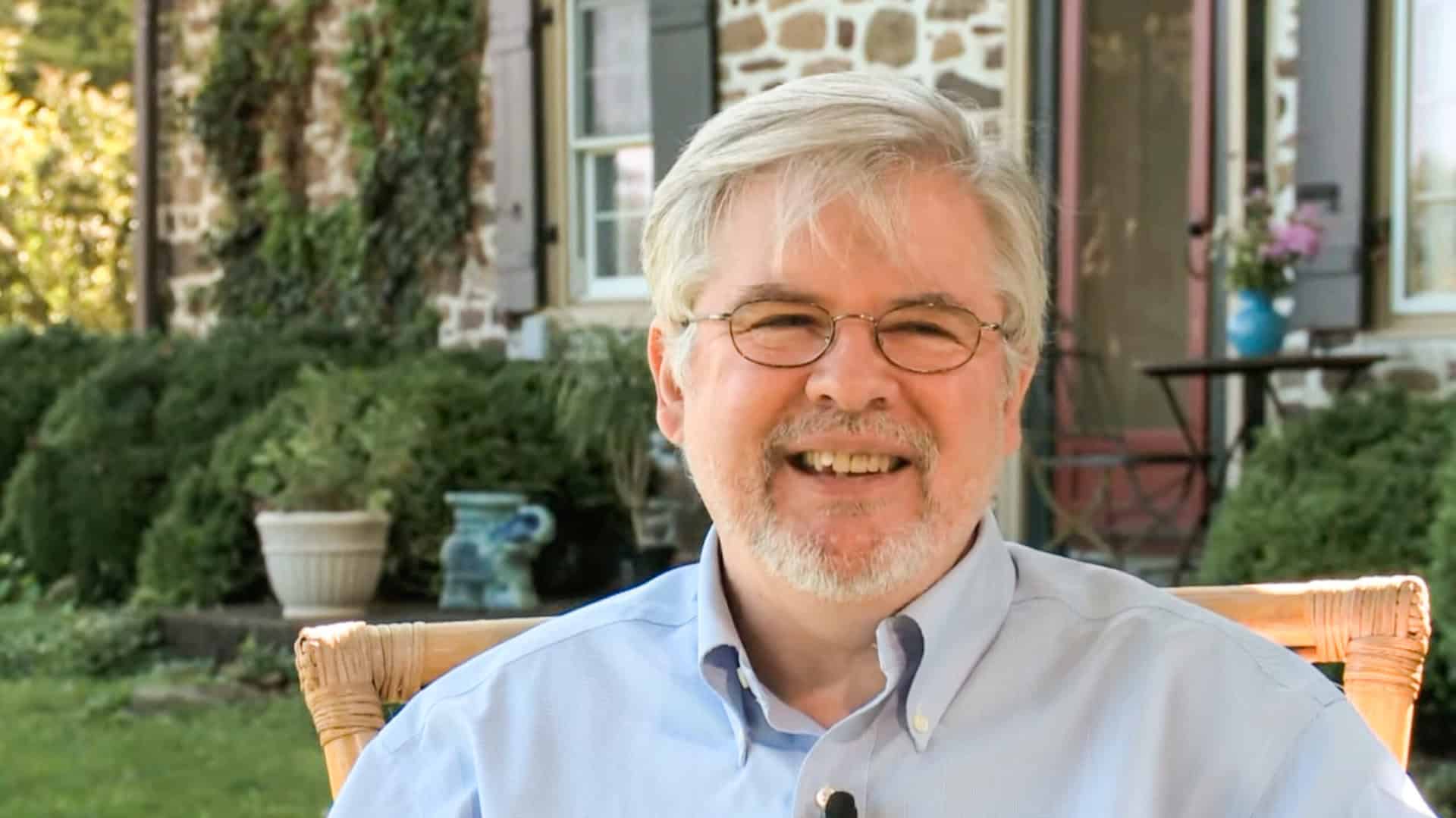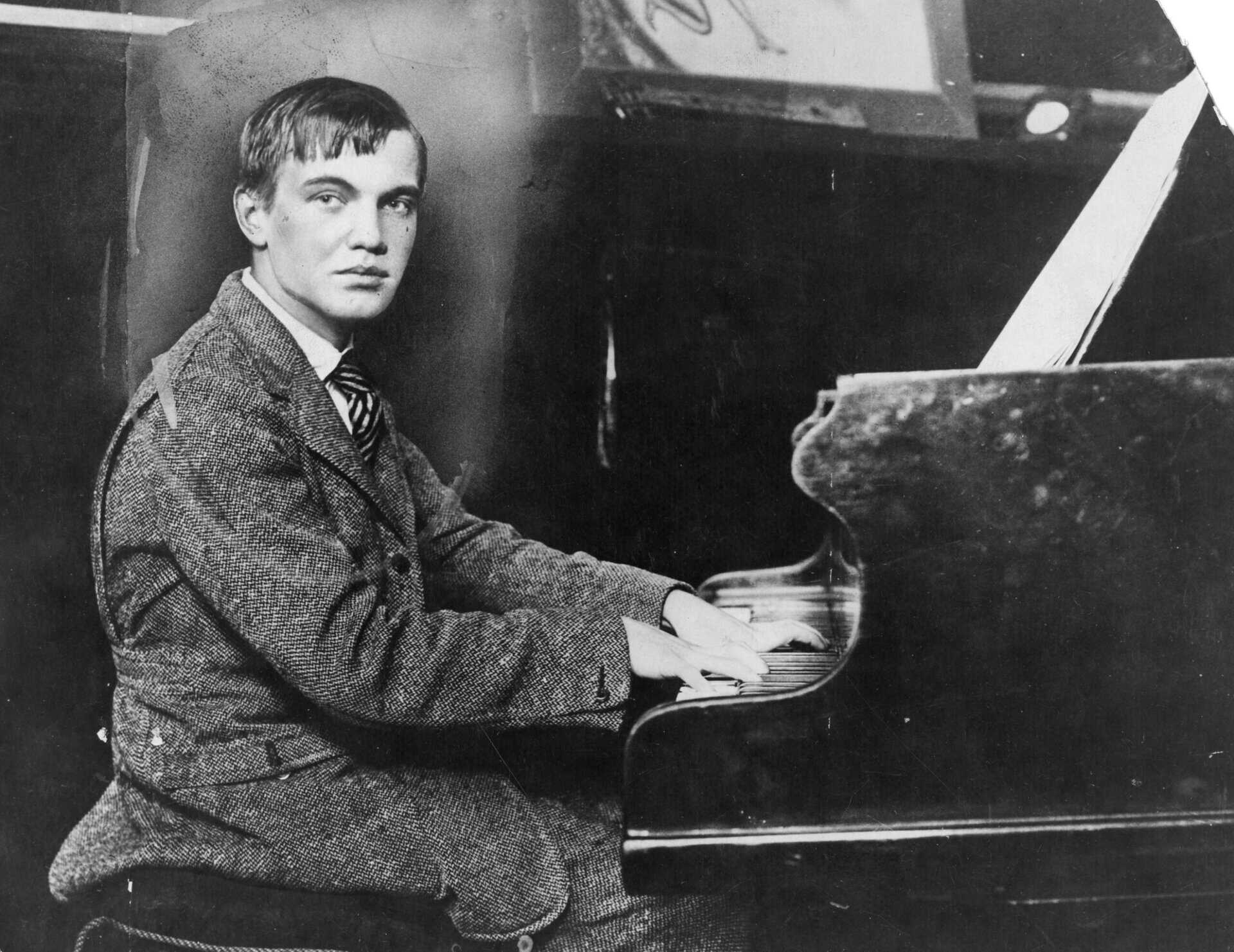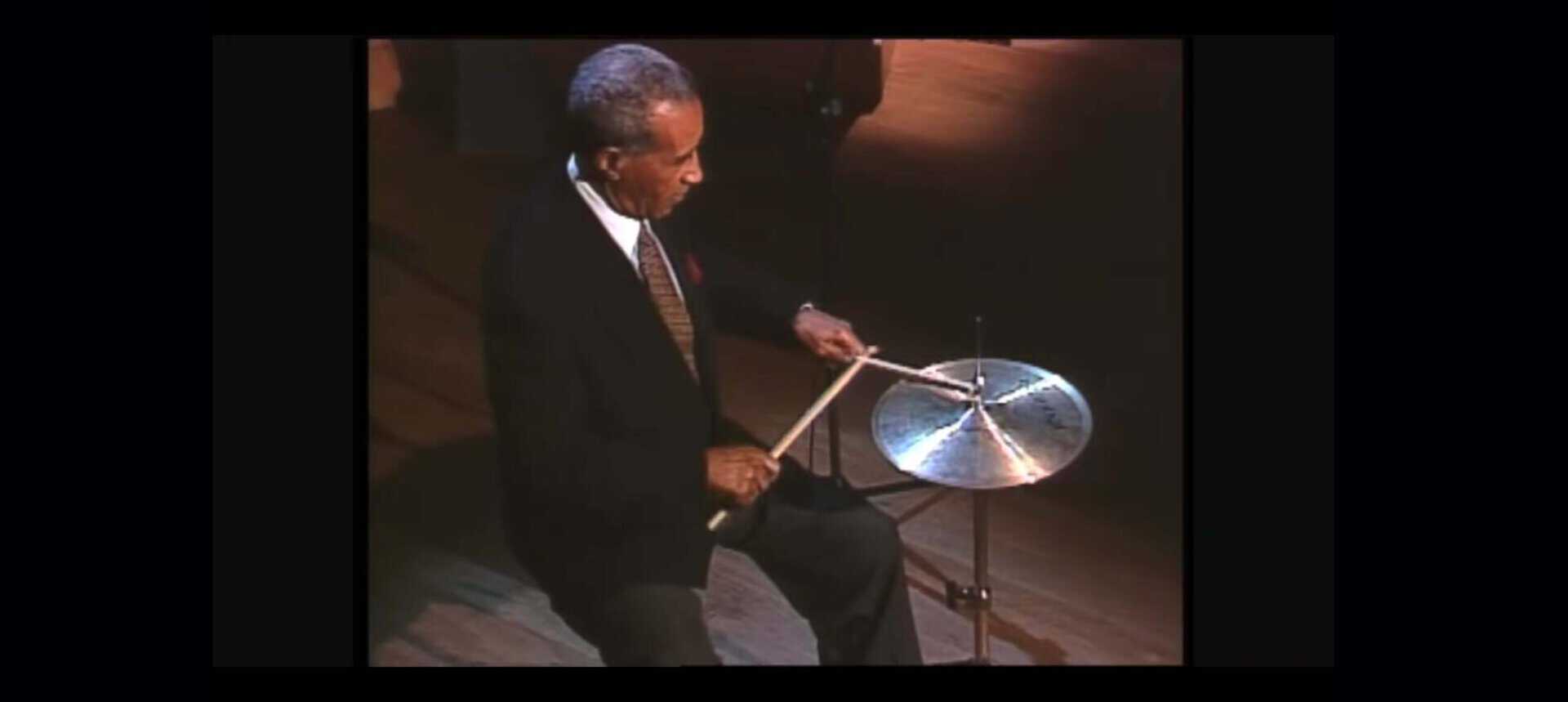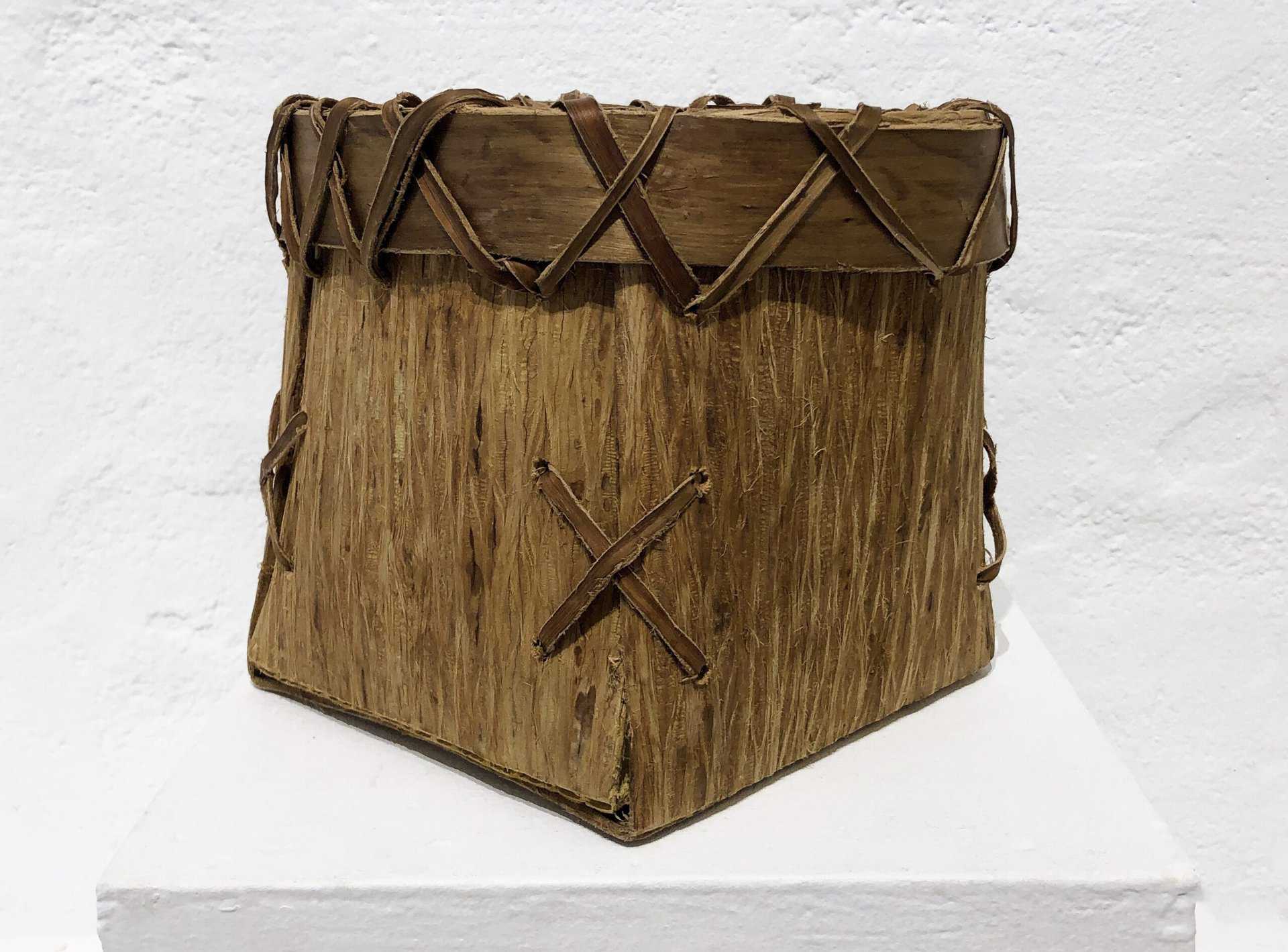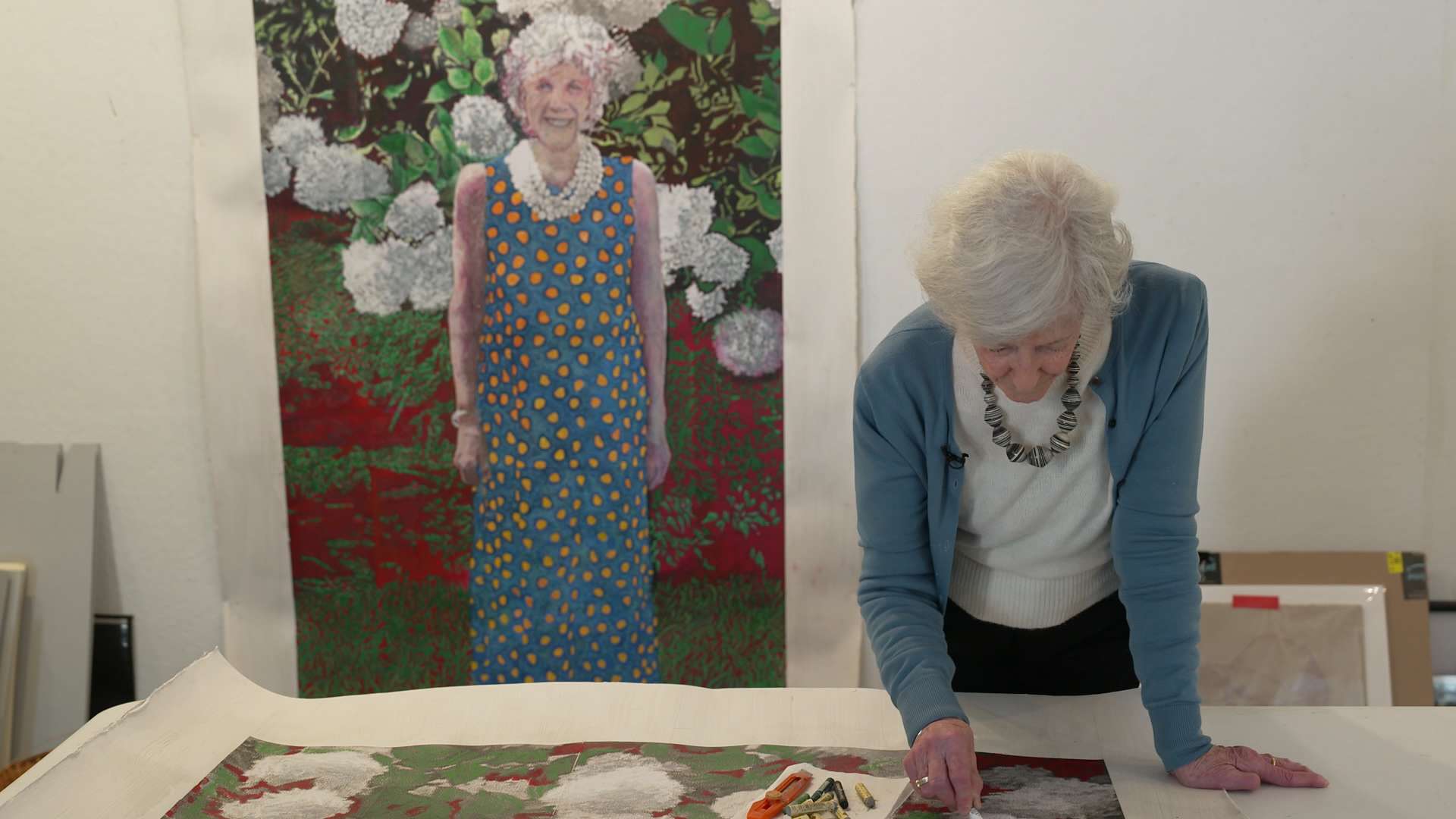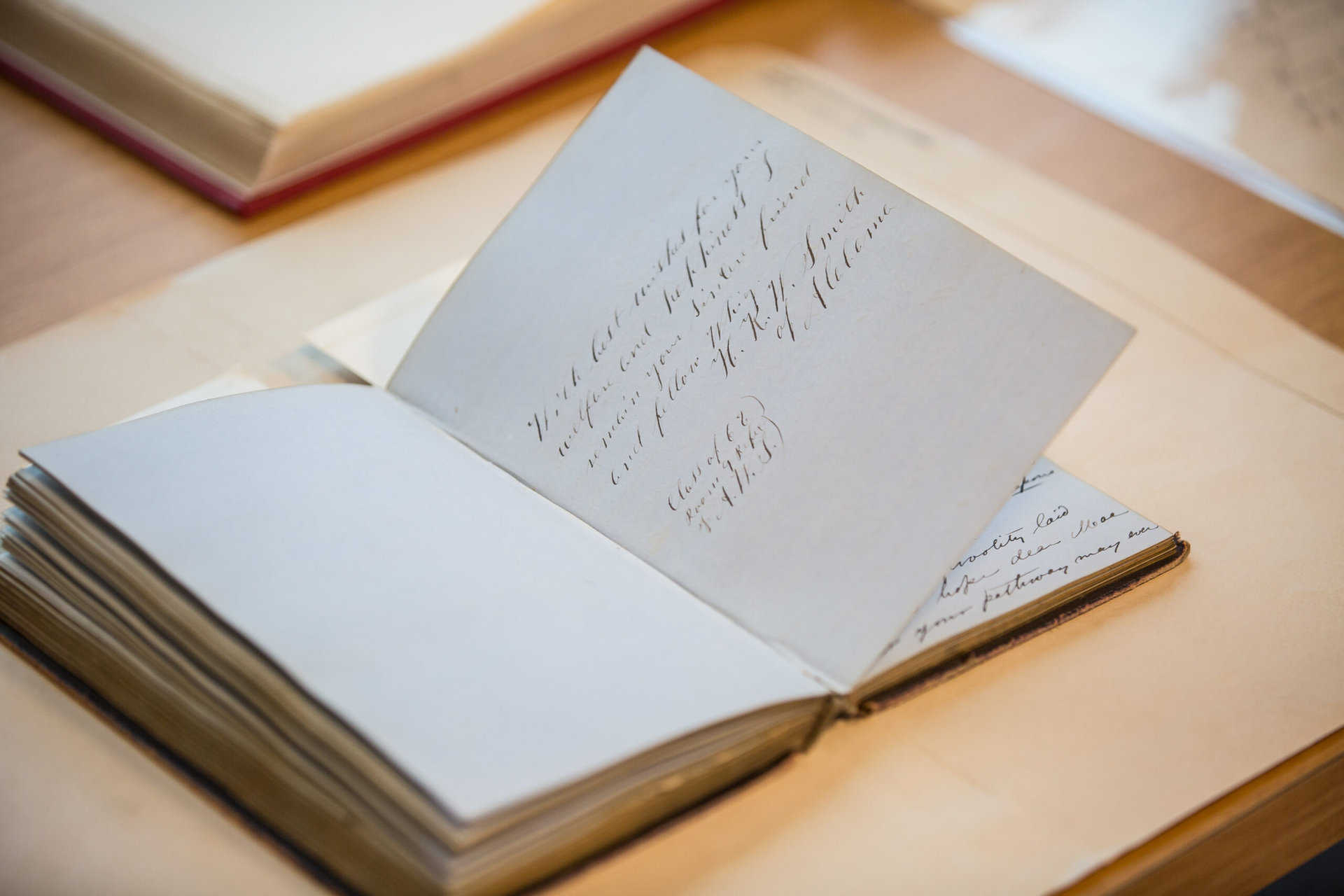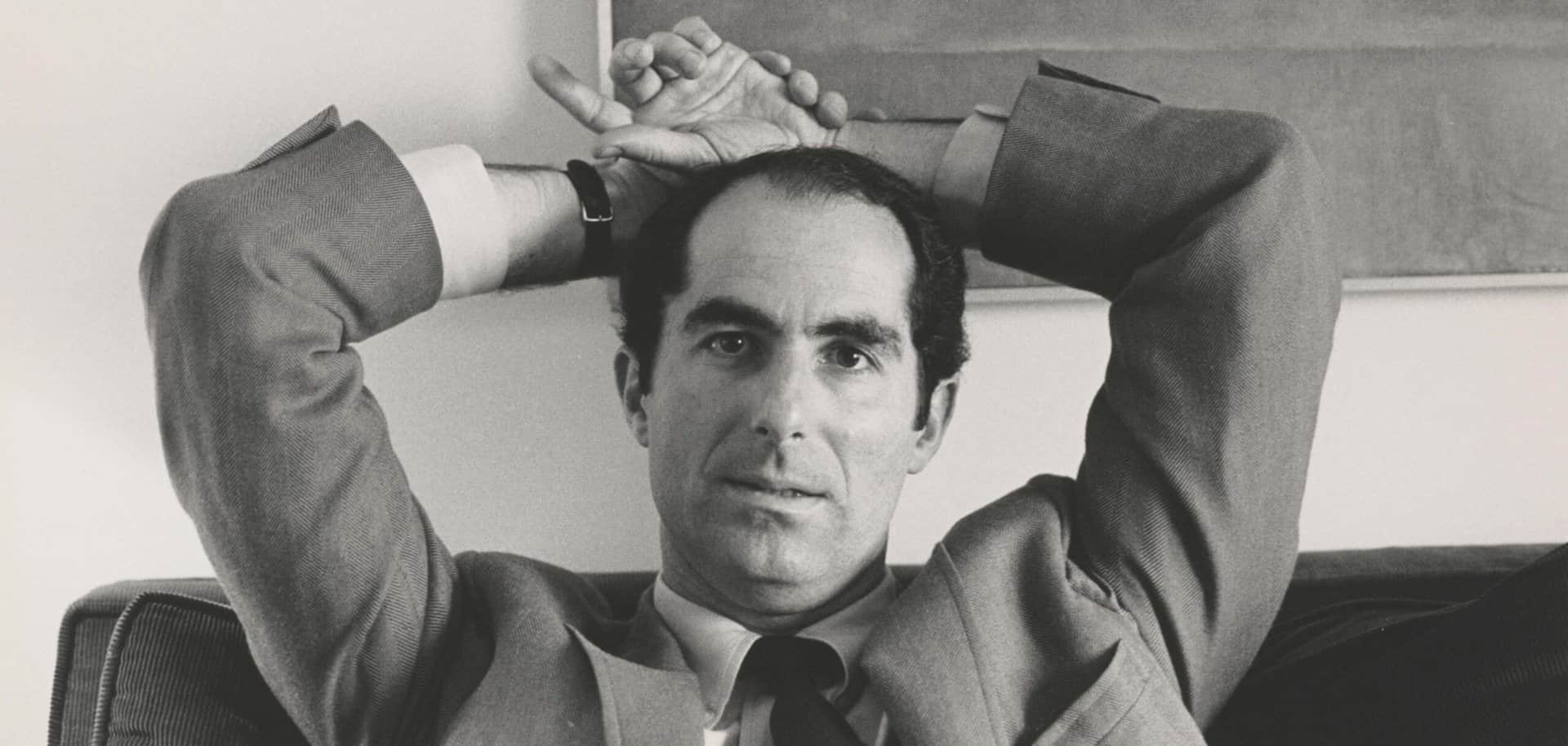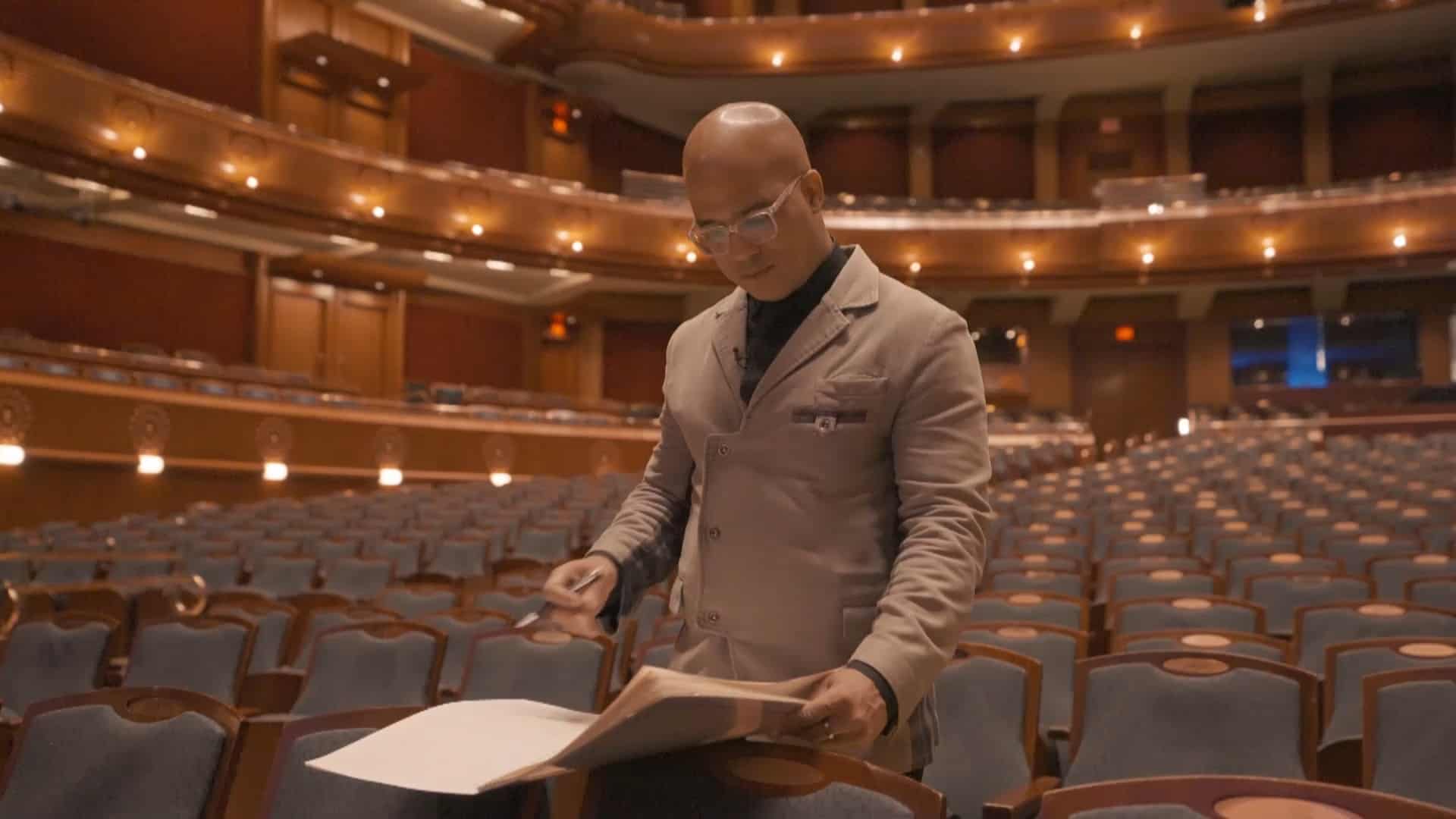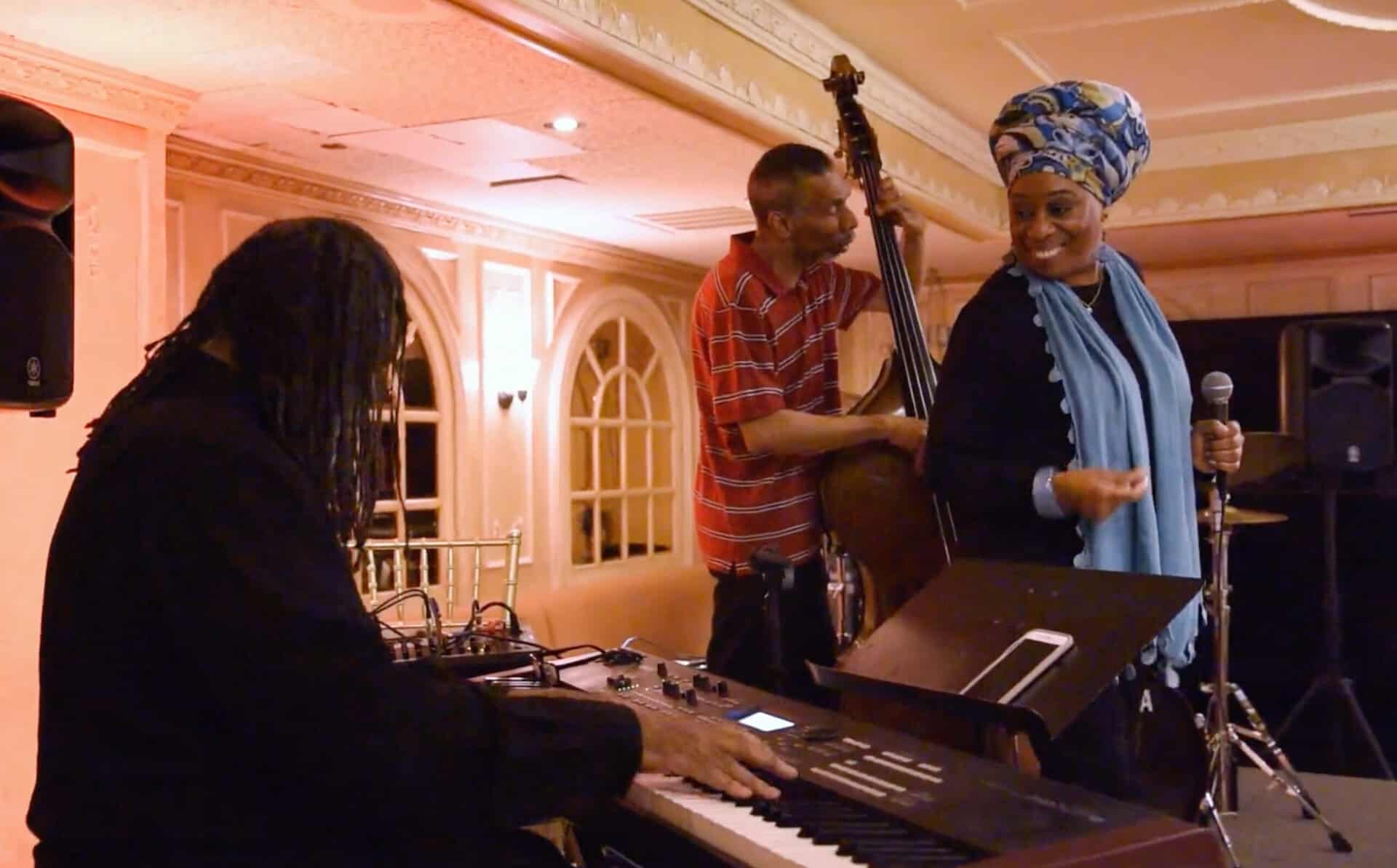Header image: Toshiko Takaezu with her works at home in Quakertown, New Jersey, 1997 Photo: Bobby Jae Kim; Courtesy: Family of Toshiko Takaezu
When an artist produces a good piece, that work has mystery, an unsaid quality; it is alive. – Toshiko Takaezu
You have until July 28 to make the trip to the Noguchi Museum in Queens to see Toshiko Takaezu: Worlds Within. It’s worth the trip. On display are works from every part of Toshiko’s long career, including an amazing array of her earliest signature pieces, multi-stemmed vessels from the 1950s.
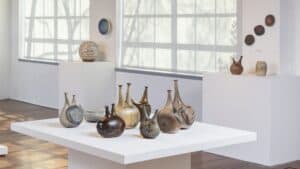
Display exploring Toshiko Takaezu’s early works and influences
Installation view (detail), Toshiko Takaezu: Worlds Within, The Noguchi Museum
Photo: Nicholas Knight; Courtesy: The Noguchi Museum
Toshiko Takaezu is one of New Jersey’s most treasured artists. For decades, she lived in rural Hunterdon County in an old farmhouse where she made pots, gardened, and cooked. A succession of apprentices lived and worked with her there, and it was a gathering place for her many friends as well as the stream of pilgrims to her famed open houses. Outside, Toshiko’s bronze bells and “trees” shared the space with her gardens. This is where the documentary I produced for State of the Arts in 1993 begins, with Toshiko striking one of her bells with a wooden mallet, creating a sonorous tone—then harvesting beans from plants taller than she is.
In so many ways, Toshiko was ahead of her time. A Japanese American woman who worked in a craft medium, she steadfastly pursued her work on what were then the margins of the art world. However, her fame and influence have grown organically over the years, as her friends and followers have supported and promoted her legacy. And times have changed—the perceived division between “craft” and “art” has shifted and blurred, and art by women and Asian American artists is sought out by many.
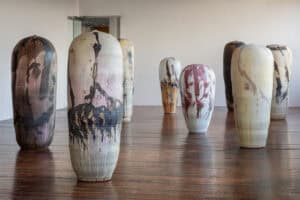
Works from Toshiko Takaezu’s Star Series (c. 1994–2001) Installation view, Toshiko Takaezu: Worlds Within, The Noguchi Museum Photo: Nicholas Knight; Courtesy: The Noguchi Museum
The sculptor and designer Isamu Noguchi was both a friend and collector of her work, and his museum is a fitting location for Toshiko Takaezu: Worlds Within. The retrospective, years in the making, travels nationally through 2026 and is accompanied by a remarkable monograph. And this is just the beginning; there is a profusion of activity around Toshiko and her legacy right now.
Among other exhibitions, the Museum of Fine Arts Boston’s Shaping Abstraction is open through September 29. Expect to see a focus on her work at the Princeton University Museum of Art upon its reopening in 2025. And if you’re in the market to buy (or just to admire) there’s an online show and sale of Toshiko’s works at David Zwirner gallery, and her pieces are often sold at Rago Auctions (see their upcoming ceramics sale on June 12). Last year, her work reached an auction high of $541,800 with the sale of Moon. It’s a record not likely to stand for long.
Looking back, it all seems meant to be. As she says in Toshiko Takaezu: Portrait of an Artist,
You know, there is always such a thing as timing. And if you let yourself, allow yourself to work on timing, you really get it. I know when to change – something tells me you should go away and study. And something tells you, you know, it’s a good thing to teach. Even do my own work, it’s timing that you know it’s the right time to do.
It’s my favorite quote of hers. Toshiko trusted the unknown: she listened, and she waited. And now things she planted years ago are coming to fruition.
A New York Times article points out that the MFA Boston exhibition centers around pieces that Toshiko donated before she died in 2011: “It is one of 16 museums that Takaezu strategically earmarked to receive self-selected constellations of her best works.” The article goes on to quote the curator, Nonie Gadsden: “She was just laying the seeds so it was there—ready when we were.”
Toshiko Takaezu’s studio in Quakertown, New Jersey is now home to the Toshiko Takaezu Foundation, and the public is invited for special openings and other events. And as you travel, keep your eyes open for her work—I’ve noticed that it often shows up in unexpected places.


